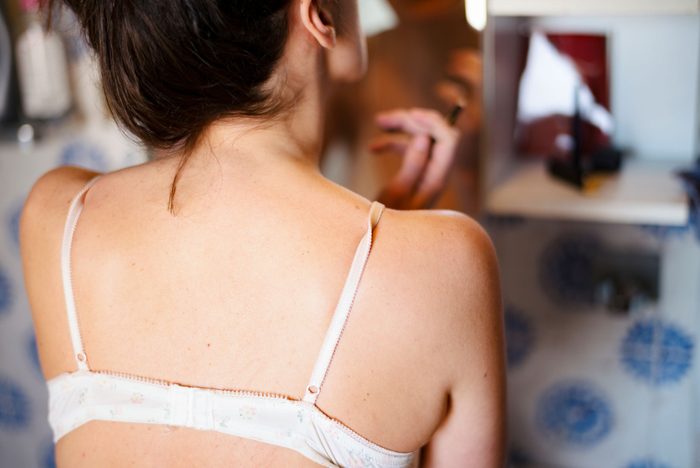What Is a Breast Cancer Rash? A Doctor Explains
Updated: Nov. 01, 2023

A breast rash is cause for concern, but not every skin irritation is a breast cancer rash. Here's what you need to know about breast rashes.
If you develop a rash on your breast, it doesn’t mean that you have breast cancer. It can be a sign of breast cancer in some cases. A breast rash can be a result of other conditions that don’t involve cancer, so it’s good to find out if it’s a simple rash or a breast cancer rash.
“Inflammatory breast cancer is one example of a breast cancer rash, but not all rashes are inflammatory breast cancer,” Angela Alexander, PhD, senior clinical studies coordinator of the Inflammatory Breast Cancer Program at MD Anderson Cancer center, tells The Healthy @Reader’s Digest.
Non-cancerous causes of breast rash can include mastitis, breast abscesses and mammary duct ectasia (a blocked milk duct). Paget’s disease, a rare form of breast cancer that is limited to the nipple and surrounding skin, can also produce a rash. “Skin rashes may occur in response to treatments such as paclitaxel [a chemotherapy medication] or immunotherapy,” Dr. Alexander adds.
Can you get an itchy rash with breast cancer? Yes, you can, but that doesn’t mean that any breast rash is, in fact, cancerous.
What is inflammatory breast cancer?
Inflammatory breast cancer—some people call it IBC—is a rare type of breast cancer that only makes up about 1% to 5% of all breast cancers. A rash is common with this type of cancer.
It’s a type of invasive ductal carcinoma that presents differently from other forms of breast cancer. Of times, it doesn’t cause a breast lump. Cancer cells can block lymph vessels in the skin, causing symptoms like swelling and redness.
This Survivor Just Delivered Her One-Millionth Meal to Patients Fighting Breast Cancer
What does a breast rash look like?
There can be many causes of breast rash. If it’s from inflammatory breast cancer, you’ll likely have ongoing itching and red skin. It may be similar to a bug bite, but it can grow to about one-third the size of the breast. Lymph nodes near your armpits or collarbone may become swollen.
The skin can look red, swollen and feel warm. Pores on the skin of your breast may expand or dilate. The skin may appear textured like an orange peel. The nipple can become flat, inverted or dimpled in appearance.
New Study: Artificial Intelligence Detected Breast Cancer 20% Better Than Doctors
When should I be concerned about a rash on my breast?
Talk to your doctor about any breast rash so you can receive an accurate diagnosis. To find out if a rash is cancer, you’ll need imaging like mammogram and ultrasound and a biopsy, Dr. Anderson says. A primary care doctor, gynecologist, or breast surgeon can order those tests.
A radiologist will perform the core biopsy based on the mammogram or ultrasound findings. A skin punch biopsy may be taken by a breast surgeon or dermatologist to confirm the diagnosis; however Dr. Anderson says a positive skin test is not required to make the diagnosis.
“The diagnosis of [inflammatory breast cancer] is made when the biopsy confirms cancer, and the clinical picture is consistent with a rapid progression of aggressive cancer,” Dr. Anderson explains.
The doctor will need to see if the cancer has spread to other parts of your body, or if it’s just confined to the breast. The treatment for inflammatory breast cancer is usually local (on the affected breast) and systemic (throughout the whole body).

















